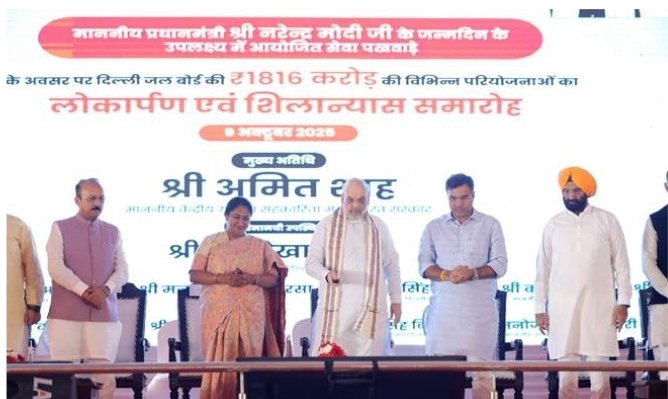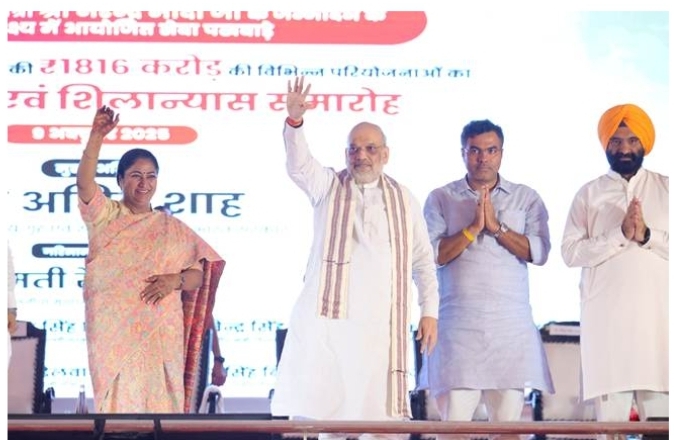From Development Projects to Citizen Delight: How Delhi Transformation Journey Mirrors Modern CX Principles
When Amit Shah recently announced development projects worth ₹1,816 crore for Delhi, something fascinating happened beyond the political rhetoric. The initiative showcased principles that customer experience professionals have championed for decades: transparency, accountability, and citizen-centric service delivery. Yet how often do we connect the dots between good governance and exceptional customer experience?
Government agencies worldwide struggle with the same challenge private companies faced twenty years ago. Citizens expect seamless, efficient interactions while dealing with complex, often frustrating bureaucratic processes. The difference? Unlike businesses, citizens can’t simply take their “business” elsewhere.
The Trust-Experience Connection: Why Government CX Matters More Than Ever
Research reveals a striking truth about government customer experience. Citizens are nine times more likely to trust government agencies when they’re satisfied with services received. This isn’t just a nice-to-have metric—it’s fundamental to democratic stability and effective governance.
Recent studies demonstrate that government customer satisfaction lags 21 percentage points behind private sector performance globally. This gap creates cascading effects: reduced civic engagement, lower compliance with regulations, and ultimately, weakened institutional legitimacy.
The connection between service quality and public trust becomes even more critical when corruption enters the equation. Citizens experiencing corruption are significantly less likely to trust public institutions, creating a vicious cycle where poor service delivery breeds cynicism and disengagement.
Delhi Development Blueprint: A Case Study in CX Transformation
The recent Delhi announcements offer compelling insights into how traditional governance challenges mirror customer experience pain points. Consider the key initiatives:
Yamuna River Cleaning Project: This represents classic service recovery—addressing a long-standing promise that previous administrations failed to deliver. The commitment to complete cleaning by 2029 establishes clear timelines and accountability measures, fundamental CX principles often missing in government services.
Garbage Mountain Elimination: The promise to eliminate 65-meter-high garbage hills by January 2028 tackles visible service failures that directly impact citizen quality of life. This approach mirrors how leading companies address customer pain points systematically rather than offering band-aid solutions.
Ayushman Bharat Implementation: Rolling out healthcare coverage within the first week demonstrates the power of rapid service deployment—a hallmark of digital-first organizations that prioritize user needs over bureaucratic processes.
The Delhi Digital Government Revolution: Lessons from Global Leaders
Leading governments worldwide are applying customer experience methodologies to transform public service delivery. Estonia’s e-Residency program allows global digital participation in government services, while the UAE’s Roads and Transport Authority uses Natural Language Processing to identify citizen needs through social media monitoring.
These innovations share common characteristics with successful private sector transformations:
Omnichannel Service Delivery: Citizens can access services through multiple touchpoints—online portals, mobile apps, physical locations, and phone support—with consistent experiences across all channels.
Proactive Communication: Status updates, SMS notifications, and transparent timelines keep citizens informed throughout service processes, reducing anxiety and building trust.
Data-Driven Decision Making: Governments use analytics to identify service bottlenecks, predict citizen needs, and optimize resource allocation based on actual usage patterns rather than assumptions.
Breaking Down Silos: The Organizational Challenge
Government agencies face unique structural challenges that private companies rarely encounter. Multiple stakeholder accountability, regulatory constraints, and political oversight create complexity layers that can paralyze innovation efforts.
Successful transformations require addressing these organizational realities:
Cross-Agency Collaboration: Services spanning multiple departments need unified customer journeys. Citizens shouldn’t need to understand internal organizational structures to access basic services.
Employee Experience Investment: Government workers providing better service quality are more engaged and empowered. Poor employee experience directly translates to poor citizen experience.
Leadership Commitment: Transformation initiatives fail without sustained leadership support that survives political transitions and budget cycles.
Measuring What Matters: The Governance CX Scorecard
Private sector companies track Net Promoter Scores, Customer Satisfaction indices, and Customer Effort Scores. Government agencies need equivalent metrics that capture citizen experience quality:
Service Completion Rates: How many citizens successfully complete intended transactions without requiring multiple touchpoints or escalations?
Trust and Confidence Indicators: Regular surveys measuring citizen confidence in government capabilities and transparency perceptions.
Accessibility Metrics: Are services equally accessible across demographic groups, geographic locations, and technology comfort levels?
Resolution Time Analysis: Average time from service request to completion, with benchmarks against similar services in other regions or countries.
The Citizen Satisfaction Index System used by various governments provides a framework for measuring awareness, availment, satisfaction, and perceived importance of government services across multiple domains.
Technology as Enabler, Not Solution
Digital transformation often gets positioned as the silver bullet for government service challenges. Reality proves more nuanced. Technology amplifies existing processes—if those processes are broken, digitization simply makes them fail faster.
Successful digital government initiatives follow customer experience principles:
Human-Centered Design: Technology solutions start with understanding citizen journeys, pain points, and desired outcomes rather than internal process requirements.
Iterative Development: Agile methodologies allow for rapid testing, feedback incorporation, and continuous improvement based on actual user behavior.
Security and Privacy Integration: Citizens need confidence that personal information remains protected while accessing convenient digital services.
India’s e-District Project in Delhi exemplifies this approach, simplifying 64 government services across multiple departments while reducing processing times and eliminating unnecessary documentation requirements.
The Accountability Imperative: Transparency as Competitive Advantage
Corruption and lack of transparency create the ultimate poor customer experience. Citizens experiencing corrupt practices show dramatically reduced trust in all government institutions, not just the specific agency involved.
Leading governments are implementing transparency measures that would make private companies envious:
Real-Time Service Tracking: Citizens can monitor application status, see processing timelines, and receive automated updates throughout service delivery.
Performance Dashboards: Public reporting of service delivery metrics, citizen satisfaction scores, and improvement initiatives creates accountability pressure similar to publicly traded companies.
Grievance Resolution Systems: Structured complaint processes with defined response times and escalation procedures ensure citizen concerns receive appropriate attention.
Building Sustainable Change: Beyond Political Cycles
The challenge facing government customer experience initiatives extends beyond implementation—it’s about creating change that survives political transitions and budget pressures.
Institutional Memory: Successful programs require documentation, training systems, and knowledge transfer processes that transcend individual leadership changes.
Citizen Co-Creation: Involving citizens in service design and improvement processes creates stakeholder investment that supports continuity across political cycles.
Measurable Impact: Demonstrating clear ROI through cost savings, efficiency gains, and citizen satisfaction improvements helps protect programs during budget reviews.
The Economic Case for Government CX Investment
Research shows that dissatisfied citizens are twice as likely to contact expensive government hotlines multiple times for help. Every percentage point improvement in citizen satisfaction correlates with reduced operational costs and increased voluntary compliance with regulations.
Consider these economic impacts:
Reduced Service Costs: Self-service digital options and streamlined processes decrease per-transaction costs while improving service quality.
Increased Revenue Collection: Citizens trusting government institutions show higher voluntary tax compliance and reduced enforcement costs.
Economic Development: Efficient government services attract business investment and support entrepreneurship by reducing regulatory friction.

The Path Forward: Actionable Strategies for CX Professionals
Customer experience professionals working with government agencies can drive meaningful change by applying these strategic approaches:
Start with Quick Wins: Identify high-visibility, low-complexity improvements that demonstrate value and build momentum for larger transformation initiatives.
Map Citizen Journeys: Document complete service experiences from citizen perspective, identifying pain points and opportunities for simplification.
Implement Feedback Loops: Create systematic methods for capturing, analyzing, and acting on citizen feedback across all service touchpoints.
Champion Employee Experience: Invest in training, tools, and empowerment for frontline government workers who directly interact with citizens.
Measure and Communicate Impact: Develop metrics that resonate with both government leaders and citizens, showing clear progress toward improved service delivery.
The Delhi development announcements represent more than political promises—they signal recognition that good governance requires customer experience excellence. Success will depend on execution that prioritizes citizen needs, maintains transparency, and delivers measurable improvements in service quality.
Government agencies embracing customer experience principles position themselves for sustainable transformation that builds public trust, improves operational efficiency, and strengthens democratic institutions. The challenge isn’t technical—it’s cultural, requiring commitment to put citizens first in every policy decision and service interaction.

